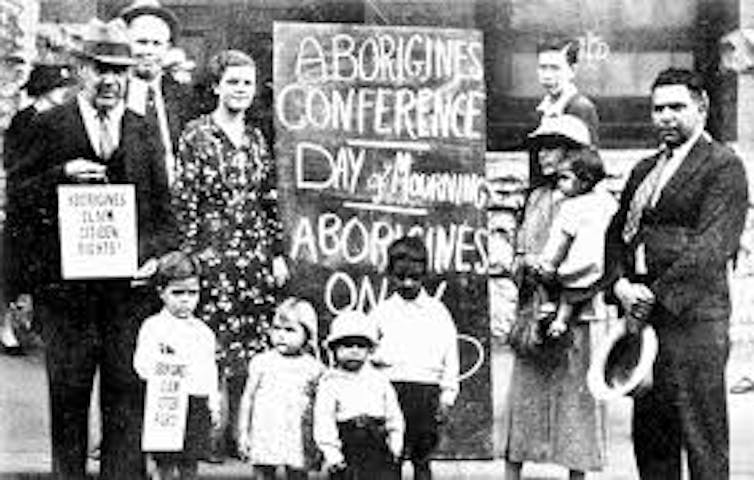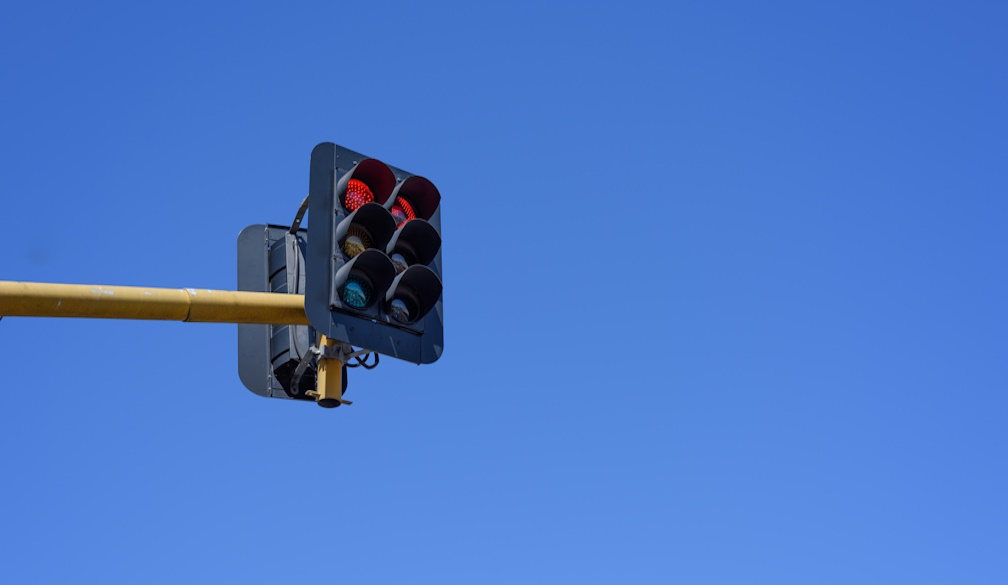Much to celebrate as NAIDOC Week turns 50, but also much to learn
- Written by Lynette Riley, Co-chair of the National NAIDOC Committee and Professor in the Sydney School of Education and Social Work; and Chair, Aboriginal Education and Indigenous Studies.original Education & Indigenous Studies., University of Sydney

Aboriginal and Torres Strait Islander readers are advised this article contains names and/or images of deceased people.
In 1938, when Australia celebrated the sesquicentenary[1] – 150 years since Captain Phillip and the First Fleet landed in Sydney Cove[2] – the organisers wanted Aboriginal people to be involved in a re-enactment.
More than 25 Aboriginal men were rounded up from Menindee in western New South Wales. They were told if they did not perform the role of running up the beach[3] away from the British, their families would starve.
Ngiyaampaa elder Beryl (Yunghadhu) Philp Carmichael, who was three at the time, recollected years later[4] that all she could remember was the crying:
All the women were crying. Whether they were taking them away to be massacred, no one knew.
The re-enactment was of course a fallacy of what really happened on January 26 1788 – it was a “white-washing” of history.
The mistreatment of the Menindee men illustrates the anger that was simmering over the status and treatment of fellow Aboriginal kin.
Protests against[5] Australia Day, which had been growing since the 1920s, led to the Aboriginal Day of Mourning[6], the first national gathering of Indigenous people speaking up against discrimination and dispossession.
The emergence of Aboriginal protest groups nearly a century ago gave birth in the 1970s to what eventually came to be known as the National Aborigines and Islanders Day Observance Committee[9] (NAIDOC), which this year celebrates its 50th anniversary.
Celebrating culture
NAIDOC’s role is to encompass all Indigenous/First Nations peoples in Australia.
One week[10] is set aside each July:
to celebrate and recognise the history, culture and achievements of Aboriginal and Torres Strait Islander peoples.
NAIDOC Week[11] is essentially a celebration of the oldest, continuous living cultures on earth. Numerous events are held across the country – performances, art and photographic exhibitions, smoking ceremonies and the popular National NAIDOC Awards[12].
They present a crucial opportunity to increase awareness in the wider community of Indigenous history and excellence, while acknowledging the challenges that remain.
It is distinct from Reconciliation Week[13], which focuses on relations between Indigenous and non-Indigenous people.
As a current co-chair of the NAIDOC Committee, I recognise the ongoing need, as initially established by our Elders as the founders of NAIDOC Week, to highlight the continuing issues for us as Indigenous peoples in Australia.
NAIDOC themes
We do this by setting a theme each year[14] focused on a specific challenge.
The themes are determined through deep consideration of the significant issues facing Indigenous peoples. They have evolved through political protests, social change, recognition, respect and appreciation of Indigenous rights.
Some examples down the years from the 1970s include:
- Advance Australia Where? (1972)
- Self Determination (1974)
- White Australia has a Black History (1987)
- Understanding It Takes the Two of Us (1985)
- Justice not Tolerance (1995)
- Gurindji, Mabo, Wik – Three Strikes for Justice (1997)
- Bringing Them Home (1998)
- Advance Australia Fair? (2008)
- Our Languages Matter (2017)
- Voice. Treaty. Truth. (2019)
- Always Was, Always Will Be (2020).
NAIDOC Week helps promote to the wider community the importance of truth-telling and learning of societal issues, the heritage of culture and languages, and the history of interactions between Indigenous and non-Indigenous people.
Ask yourself: what do you know about the themes? Why are they relevant and what impact do they have on Indigenous peoples across Australia?
Next generation
The theme for 2025[15] is “The Next Generation: Strength, Vision and Legacy”.
It was selected following the committee’s distress at the way in which our youth are often demeaned in the media[16] and presented as social pariahs and potential risks to the wider community’s safety.
References
- ^ sesquicentenary (www.flickr.com)
- ^ landed in Sydney Cove (www.sydneybarani.com.au)
- ^ running up the beach (digital-classroom.nma.gov.au)
- ^ years later (www.abc.net.au)
- ^ Protests against (www.naidoc.org.au)
- ^ Aboriginal Day of Mourning (deadlystory.com)
- ^ National Museum of Australia (www.nma.gov.au)
- ^ CC BY (creativecommons.org)
- ^ National Aborigines and Islanders Day Observance Committee (www.naidoc.org.au)
- ^ One week (theconversation.com)
- ^ NAIDOC Week (www.naidoc.org.au)
- ^ National NAIDOC Awards (www.naidoc.org.au)
- ^ Reconciliation Week (www.reconciliation.org.au)
- ^ theme each year (bwtribal.com)
- ^ theme for 2025 (www.naidoc.org.au)
- ^ demeaned in the media (www.sbs.com.au)
- ^ Dante Rodrigues (www.naidoc.org.au)
- ^ Courtney Burns (www.naidoc.org.au)
- ^ Elijah Manis (www.naidoc.org.au)
- ^ Culture Is Life (cultureislife.org)
- ^ kind of ancestor (live-production.wcms.abc-cdn.net.au)
- ^ Irwin Lewis (www.instagram.com)
- ^ Shaylem Wilson (www.abc.net.au)
- ^ taken away (www.humanium.org)
- ^ Manny Williams (cultureislife.org)
Read more https://theconversation.com/much-to-celebrate-as-naidoc-week-turns-50-but-also-much-to-learn-259900













